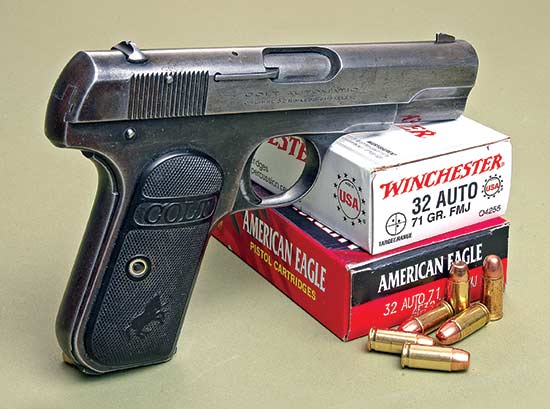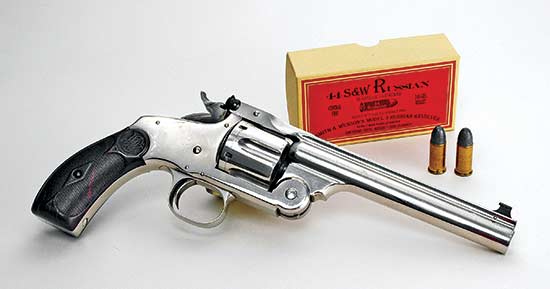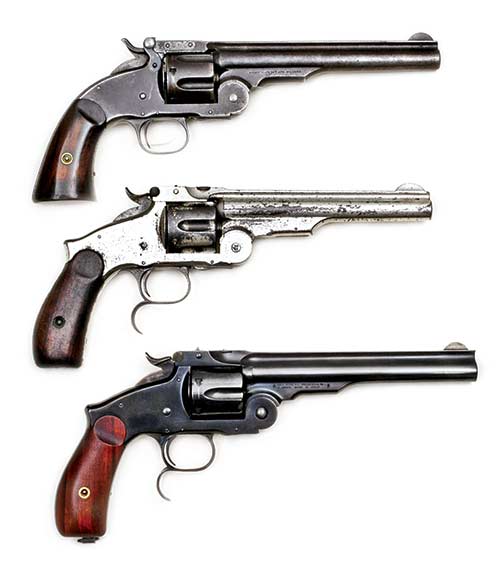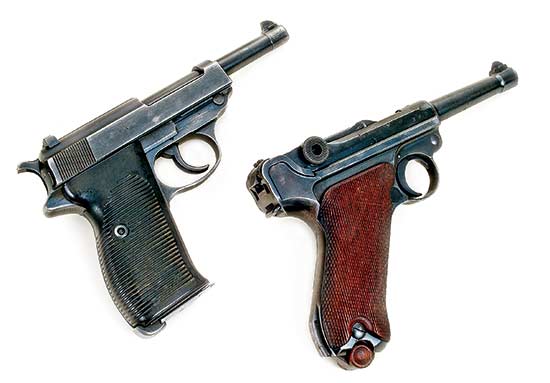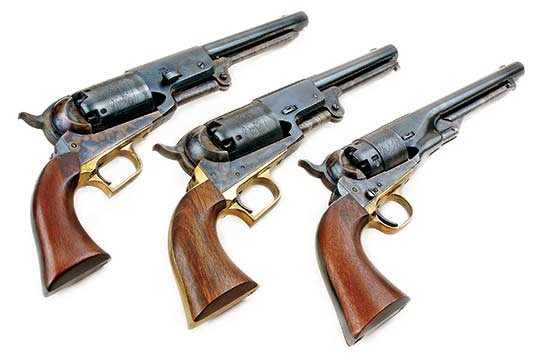Esthetics In Handguns
Esthetics — also correctly written as aesthetics — are words defined as “the laws and principles determining the beauty in nature, art, taste, etc.” It goes on to say an aesthete is a lover of the beautiful. I guess I’m one.
Regarding handguns today an aesthete might as well be synonomous with dinosaur. Today’s handguns — and I mean many designed and introduced in the past 40 years — have the esthetics of a brick. They’re blocky in shape, identical to every other brick, and just as bricks do their jobs when used properly, so do most modern handguns. And just as I have no use for bricks in my life, there are no spots for modern handguns in my vault.
Some years back at a SHOT Show while visiting with the production manager of a plant producing very high quality handguns, he started laughing. When I asked what was funny he said, “You’re inspecting that revolver, all the while making eye contact with me. You’re running your fingers all over its seams feeling for edges or sharp corners.” He was right and by golly I found none. Some might call this quality control but I think of it as aesthetics, the ability to take a chunk of steel and with engineering and craftsmanship turn it into something perfectly functional — yet aesthetically pleasing.
Gaudy Or Good?
I came by my dinosaur status honestly by coming of age in an era where handguns were proudly owned possessions. True enthusiasts personalized them. Engraving was common, even if just with one’s name. Some truly went down the engraving path with full coverage, gold inlays and gold or silver plating. They might be fitted with stocks made of some natural materials ranging from fancy wood to the ultimate in many owners’ eyes — ivory.
I’ve had handguns with all the above excepting gold plating although I did have one silver plated. Some fancy things I liked and others not so much. For instance, some amount of engraving, say 25- to 50-percent coverage is tasteful in my mind while 100-percent coverage can get gaudy. Ivory grips are beautiful but I much prefer wood, as with the Colt SAA .44 I load with five shot shell loads in rattlesnake weather and stick in my hip pocket.
Aesthetics in handguns does not have to be what is cut into them or put on them after manufacture. Their basic form came from the minds of people living in an era when beauty seems to have been appreciated more. Old time cowboys didn’t just want a saddle their butt fit into. They wanted one built for them by a reputable maker, of fine quality leather and often with features specific to it. People used to present custom-made ink pens to each other. Time pieces were inscribed and used as gifts. Young girls were presented with do-dads for their hair made of mother of pearl. Aesthetics were present in so many everyday items.
Now think about the handguns of earlier years. Georg Luger’s idea for a semi-auto handgun first came in 1900. It was produced in only slightly altered form for at least four decades until it was replaced by the much more utilitarian Walther P38. Distinct in appearance from any other handgun, Lugers were graceful, with a slanted grip causing the barrel to point just where one’s index finger would. Herr Luger got the proportions perfect when fitted with a four-inch barrel. A deep blue finish was applied over a polish done with extreme care and, except for a later wartime variant, grips were checkered wood. Early magazines were even fitted with wooden bases. And this was a handgun primarily intended for military use.
An Artist's Eye
Also consider Walther’s PP and PPK series in all calibers that were first introduced in the late 1920s. They were graceful in form, smoothly rounded on all corners. Even the little forward curving protrusion on their magazines is eye pleasing. Of course their fit and finish, especially in pre-war versions, was beautiful. When Sean Connery used one in his early 1960s James Bond film portrayals, Walter PPKs became as famous as the actor. Ironically, European handguns are now often devoid of all aesthetics. At least to my eye.
In the realm of revolvers no country has matched the United States for handsome handguns. Of course Samuel Colt’s early revolvers were not so great in the looks department. They were behemoths weighing four pounds and more. Yet they proved the concept of revolving handguns was viable, so for most of a century in this country the word revolver could be substituted for handgun.
Few handguns have ever matched the feel and balance of what was first named “Colt’s Belt Pistol” which collectors misnamed the Model 1851 Navy .36. In fact the .36 became known as “the Navy caliber.” Its grip shape likely has been the most copied ever. Clones of it may not be exact but don’t doubt for a minute Ruger Blackhawks, Italian single-action clones, and a few now-gone American single-action manufacturers based their grip frames on the Colt Navy.
Although many considered the Model 1851 perfect, Colt’s designers applied smoothness and gracefulness to it in 1861, very intelligently keeping the grip’s shape as original. Actually they did flub a little on their last .44 caliber cap and ball revolver. We call it the Model 1860, sometimes with “Army” tagged on also because it was adopted by the U.S. Army. They lengthened the ’60 Army’s grip frame a quarter inch. This made it perhaps the most graceful appearing revolver ever designed. However, the grip frame didn’t gain popularity with the public and was not carried over to the “New Model Strap Pistol” that was later named the Single Action Army.
An Ultimate Appeal
That one has aesthetics up the ying-yang! It’s likely the world’s most famous handgun, certainly the one most embellished and still one of the most attractive if just left alone. That the last Colt percussion revolvers and the SAA were so aesthetically pleasing was no accident. Their designers intended they both function well and look good. Note with these single actions the 71/2″ barrels make the gun look perfectly balanced.
Smith & Wesson revolvers of the late 1800s could never compare aesthetically with Colt’s. But this is noteworthy. After the Russians bought boatloads of S&W Model #3s providing the company would change their designs, company officials complained their revolvers were beginning to look foreign. Their last permutation of the No. 3 single action introduced in 1878 was rounded and trimmed to a much more graceful appearance. John M. Browning designed Colt’s early 1900s “Pocket Pistols” and Colt’s Model 1911. They all are pleasing to the eye more than modern semi autos. I could prattle on and on but my point is made.
Used to be Yvonne and I could attend a movie and I could identify every handgun used in it — as if she cared. Starting after about 1985 I lost this ability. The problem isn’t with my eyesight. It’s with the changing times.


